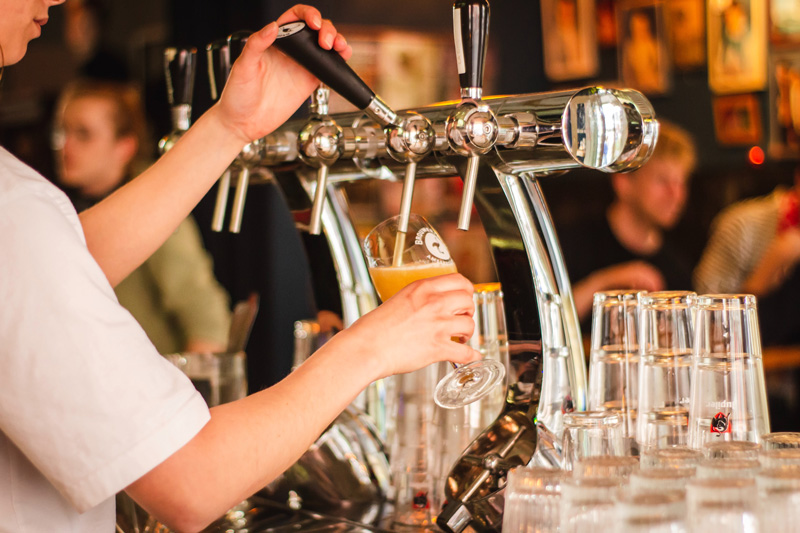
- Half of Brits are cutting back on discretionary purchases to help offset rising energy bills, while October’s unseasonably warm weather delayed new clothing purchases
- Essential spending growth tapered, impacted by easing food price inflation, cut-backs on grocery shopping and the reduced cost of some supermarket staples
- “Slack-filling” emerges as a new shrinkflation trend, as seven in 10 Brits notice products containing less of an item than suggested by the size of the packaging
- Pubs, bars & clubs had another strong month, boosted by the Rugby World Cup, while the travel sector benefitted from a rise in holiday bookings
- The Barclays report combines hundreds of millions of customer transactions with consumer research to provide an in-depth view of UK spending
Consumer card spending grew just 2.6 percent year-on-year in October – noticeably less than the latest CPIH inflation rate of 6.3 percent and the smallest uplift since September 2022 (1.8 percent) – as Brits’ concern over rising energy bills and outgoing costs ahead of the festive period hindered discretionary spending. On a brighter note, the Rugby World Cup boosted pubs and bars for the second month running, while the travel sector performed well as holidaymakers booked getaways in the UK and abroad.
Spending on essential items saw a smaller increase (3.9 percent) than last month (4.6 percent). This was largely due to supermarkets (5.3 percent) and specialist food and drink stores (5.9 percent) seeing less of an uplift than in September (6.9 percent and 8.0 percent respectively), as food price inflation continued to fall and most consumers (69 percent) continued to look for ways to reduce the cost of their weekly shop.
Of those seeking savings, 45 percent are using vouchers or loyalty points to get money off shopping and 38 percent are visiting multiple supermarkets to source a range of deals. A further 17 percent are also choosing to buy products they see as more affordable, such as fresh foods that are in season as well as pre-prepared or processed foods, such as ready meals (11 percent).
Shoppers on the lookout for “slack-filling”
A new shrinkflation trend has caught the attention of supermarket shoppers seeking to maximise the value of their grocery spending. Seven in 10 (70 percent) have noticed that certain items often contain less of the actual product than suggested by the size of the packaging – a trend otherwise known as “slack-filling”. Crisps (65 percent), sweets (43 percent), biscuits (43 percent), boxes of chocolate (42 percent) and washing detergent (21 percent) are the products most cited as being impacted by “slack-filling”.
Over two fifths (41 percent) also report that some Christmas food and drink products appear to be smaller or weigh less despite costing the same or more than last year, namely boxes of chocolate (30 percent), cheese (14 percent), mince pies (12 percent), and Christmas pudding and cake (both 11 percent).
Yet amidst the cost of living crunch, many Brits recognise that supermarkets are trying to combat food price inflation, with over a third (36 percent) noticing prices on supermarket staples have recently fallen, help budgets to stretch further.
Rain check on winter wardrobe purchases
Spending on non-essential items grew just 2.0 percent in October – the smallest uplift since September 2022 (1.1 percent) – as discretionary spending was reined in.
The unusually warm October weather also delayed sales of seasonal items such as winter coats and jumpers, contributing to the fourth consecutive monthly decline at clothing retailers (-3.0 percent). Other categories impacted include “insperiences”, with spending on takeaways and fast food slower than last month (5.6 percent versus 6.5 percent in September) and digital content and subscriptions (4.9 percent versus 7.7 percent), despite some online entertainment platforms raising prices in October.
This comes as almost half (47 percent) of consumers say they are planning to cut down on discretionary spending so they can afford their energy bills throughout the autumn and winter, with ordering takeaways (56 percent), eating out at restaurants (56 percent), and buying new clothes and accessories for day-to-day wear (50 percent) among the most common cut-backs.
On a more positive note, the Rugby World Cup continued to boost pubs, bars & clubs (up 5.9 percent), as sports fans gathered to cheer on their respective teams. The travel sector (up 10.5 percent) had another strong month, making it one of the best-performing categories in 2023. Travel agents (9.6 percent) had their highest uplift since May (9.9 percent), while hotels, resorts and accommodation saw 7.4 percent growth.
“Bring Your Own Food (BYOF)” emerges as a budget-stretching hack
To save money during days out, seven in 10 Brits (71 percent) say they now take food and drink from home, to avoid paying premium prices at venues where meals and snacks are often more expensive. Long car trips are the most common situation where Brits “BYOF” (41 percent), followed by train journeys (30 percent) and trips to the cinema (29 percent).
Other popular destinations to “BYOF” include the office (27 percent), theme parks (21 percent), airports/flights (20 percent), festivals (10 percent) and festive winter markets (8 percent). By bringing their own food and drink from home to these venues, Brits save an estimated £472.60 per person, per year.
Festive costs front of mind
Looking ahead, over a third (36 percent) expect that this Christmas will be more expensive than in 2022, and a fifth (21 percent) have concerns about keeping up with outgoing costs during the festive period. As a result of the rising cost-of-living, two fifths (37 percent) expect they will spend less on Christmas gifts this year, while just 13 percent anticipate spending more.
However, Brits are still looking for and finding economical ways to enjoy seasonal celebrations. Nearly one in five (18 percent) has already started buying gifts to spread out the cost, while 14 percent have spoken to loved ones to make a mutual agreement to cut back on gift-giving.
Esme Harwood, Director at Barclays, said: “Brits cut back on non-essential categories such as clothing and restaurants in October, as thoughts turned to saving for Christmas and budgeting for winter fuel bills. The unseasonably warm weather also hampered spending on indoor experiences, including digital streaming services and takeaways. However, pubs, bars & clubs still achieved strong growth, boosted by England’s performance at the Rugby World Cup, while the travel sector benefitted from a rise in holiday bookings.
At the supermarket, value-for-money is still a priority, with consumers increasingly wary of “slack-filling”, when a product’s packaging hides unnecessary empty space inside. On a brighter note, supermarkets are also being given credit for trying to keep prices down, with one in three noticing price cuts on everyday items.”
Jack Meaning, Chief UK Economist at Barclays, said: “It looks as though the oomph continues to go out of squeezed UK consumers. The latest transaction data shows they are pulling back from discretionary spending and increasingly worried about their future ability to spend, adding to the picture painted by other data. Third-party consumer confidence data showed a significant drop in October, coming off the back retail sales contracting significantly in September. While some of these effects might be being amplified by unseasonal weather, it’s hard to dismiss the growing evidence.”
Image courtesy of Unsplash. Photo credit: Louis Hansel.







